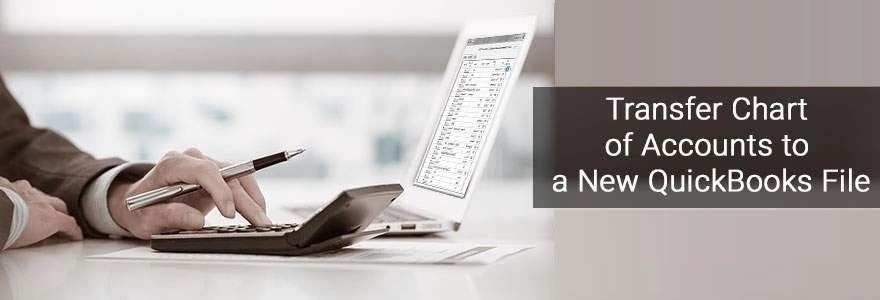QuickBooks is accounting software with features enabled in every task you perform. Over the years QuickBooks has developed software that prevents its users to make any extra efforts in utilizing the software and hence every part of QuickBooks allows you to explore and use new features. Export Chart of Accounts to a New QuickBooks File QuickBooks even allows you to restore portable files in QuickBooks 2017.
Read Also: QuickBooks Data Migration Service
If you have to begin another organization in QuickBooks Online which contains files and a Chart of Accounts of your old organization, you’ll have to send them out into an Excel document and after that re-import the files into QuickBooks Online.
Why do you need to Export a Chart of Accounts QuickBooks?
Creating a perfect company file is a major task that takes a lot of time and effort. Although there are inbuilt reports and templates available to support the work, exporting a chart of accounts in QuickBooks can simplify your work. An official chat format will be generated which can be shared with other users too.
Important: Before making the export process, don’t miss out on generating a copy of the QuickBooks file for the firm. The backup copy will prove out to be your savior in case you lose any financial information from your Company File during the transfer procedure. Exporting tables and charts of accounts of merchants, employees, and customers are swift and easy. You need to follow some moves for exporting and importing the accounts into a new QuickBooks File. Below are the detailed steps:

Methods to Export a Chart of Accounts in QuickBooks
The painless way of importing the information is by using the QuickBooks utility option. Before importing the data into the new QuickBooks file, you have required to export the data from the old file.
Total Time: 8 minutes
Let us check out the steps to make a transfer chart of accounts exported to a new QB File:
1. Sign in to the information document as the Administrator.
2. Change to single client (SU) mode.
3. In the menu bar, select File and afterward Utilities.
4. On the sub-menu, select Export, and the Lists to IIF Files.
5. Put a checkmark beside each of the files you need to export.
6. Click In the Save In the window, and peruse the area where you need to spare the IIFdocument (regularly, this will be your desktop).
Step 2:
1. In the File name field:
a. Erase the reference mark (). Windows won’t spare a document if you don’t erase the mark ().
b. Enter a document name with the extension.IIF.
2. Tap the Save.
3. Click OK to the message that the document was effectively spared.
4. Re-perform Steps 3 – 10 until the point that every single required file is sent
5. Right-tap on a sent-out record on your desktop and select Open With.
6. Select Microsoft Office Excel.
7. If you get the wizard to change over a content record, click Next, Next, Finish.
Read Also: QuickBooks Data Recovery
What are IIF Files?
IIF stands for Intuit Interchange Format. IIF documents are content records that QuickBooks uses to import and export information. Utilizing IIF records to import or export information to and from QuickBooks is simpler than utilizing Excel, CSV, and tab-delimited documents because with IIF records QuickBooks has just designed the records for you, making the whole procedure quicker and less demanding.
Conclusion
QuickBooks can sometimes encounter errors that might interrupt the utilization of the software. It is important to understand QuickBooks and all the requirements associated with it. To resolve these queries, Export a Chart of Accounts to a New QuickBooks File consulting with a QuickBooks expert is essential. It is also important to know the specifications of QuickBooks and the hardware which is being used alongside it.

Get Expert’s Advice to Fix Your All Accounting & Bookkeeping Problems